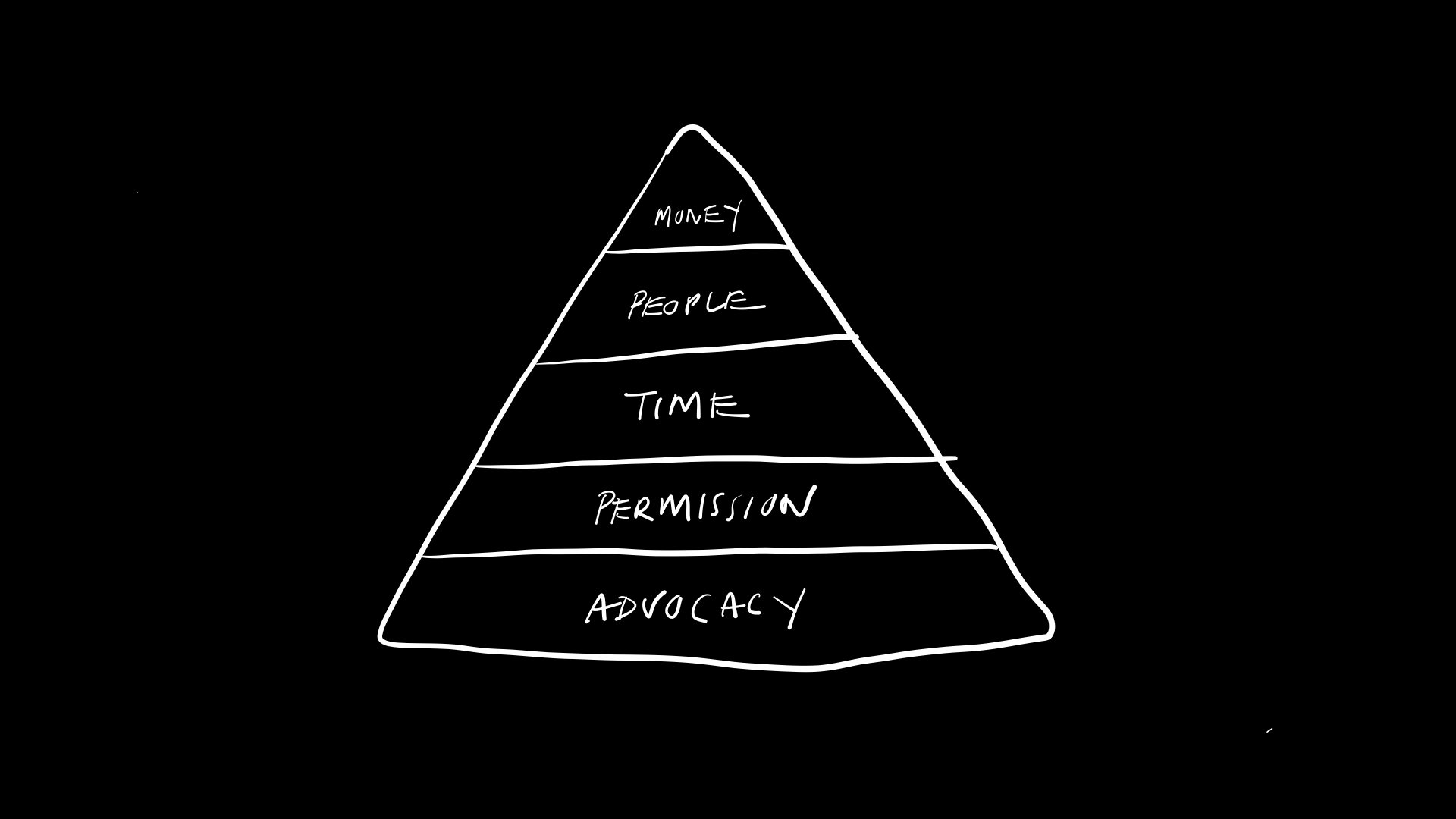Committing to service design
A few weeks ago I wrote about the types of service design leadership we see in organisations. (Helpful to read this first before reading on).
When we think about these four types of service design leadership (Idea leaders, Technical leaders, People leaders & Delivery Leaders) it's obvious you can't just have one type and still deliver good services.
For example, if we have People and Delivery Leadership without Idea Leadership, we would have no shared vision for the future. If our organisation just focussed on Idea and Technical leadership without People and Delivery Leadership, then we could end up with a lot of great ideas, but very little actual delivery of those ideas
This doesn't mean you have to do all of these roles yourself, but if no one’s doing them and they’re not present in your organisation at all it’s going to be very hard for your organisation to both generate the right ideas about service design and follow through on those ideas.
Thinking about the different types of service design leadership goes a long way when it comes to understanding how we might better equip our organisation with the skills it needs to deliver better services, but there’s still one gigantic elephant in the room; the question of whether we have commitment from everyone else outside of those leadership roles to do their part in transforming our services.
Service design leadership can be the responsibility of one person, or many, but it takes a whole organisation to improve a service over time, and crucially, make sure it stays that way.
Services are affected by every decision we make in our organisation and it’s the responsibility of every single decision maker to understand not only how their decisions impact their users, but how any issue our user has with those services impact our organisation.
To be able to have a good services in our organisation, we need service literacy;
To see services as something that can and should be designed
To be able to understand what makes a good one
To actually make a commitment to design those services
This last point is this is where organisations commonly falter. They have the best of intentions, talk about being user led, even map their services and hire service designers, but those designers are left to their own devices without the money, time or permission to do anything.
Most design maturity models overlook this last vital point of commitment. An organisation can look exceptionally ‘mature’, with designers and researchers embedded in teams and design leaders in senior roles, but somehow, their work is still not prioritised or acted on. All of the boxes for so-called design maturity have been ticked but the commitment to follow through on doing the hard work to improve our services isn't there. Why?
Organisations often fail to fully commit to the reality of service design
All too often we see our skills and experience as service design leaders as the solution and cause of any difficulty we might have with improving our services, but we can't improve services without an organisation that has committed to its side of the bargain. Sadly we can often find ourselves in an organisation that likes the idea of better services but hasn’t fully committed to what’s involved in doing this.
When we think of that ‘commitment’, we often simmer it down to ‘buy-in’ - a sort of sticky gloop that includes everything from money, to time and permission, sometimes senior cover, sometimes an increased remit, or even a holiday when we need it. ‘Buy-in’ is a word that unhelpfully hides multiple meanings.
I say unhelpfully because as design leaders it’s important that we know what we need in order to to do our best work so that we can advocate for those needs to be met, but very often we don't.
Sometimes when we join an organisation we find that, beyond hiring you, it has made absolutely no other changes to allow you to actually do the work it expects you to do. I have been in this situation many times, wondering why an organisation thought I could seemingly work miracles and change ALL of the services on my own, with no time, money or permission to do so. It’s a story I've heard from countless others too.
On the other side of the fence though, I've had countless conversations with the leaders, budget holders or hiring managers responsible for bringing in service design leadership and most of the time, the reason why this happens is not that they don't want to or can't give that person what they need, but that they have no idea what, if anything is needed.
So, here we are as service design leaders, expecting our organisations to intuit what we need, even though we can't clearly articulate it ourselves. It’s a recipe for frustration.
So, in order to actually deliver better services, what do we need? We’ve listened to thousands of designers, leaders and user centred advocates. Watched countless organisations do this well and badly and there are 5 things that are needed in any scenario to create an organisation that can design and deliver services well:
Money
Budget to buy external support, software, people, consultancy or training that would improve our services or our ability to improve them in the first place
People
The ability to hire externally or internally to deliver our work, to line manage or to restructure our people in the best way possible for our services
Time
The right amount of time to be able to make change (rather than being held to arbitrary deadlines). Not being so overwhelmed with our workload that
Permission
Express permission to make the changes you need to make, or simply get involved in the areas you need to investigate
Advocacy
Active amplification of the ideas, strategies and necessity of your work. Backup on your work if things go wrong
These 5 things aren't quite equal. They form a sort of Maslowian hierarchy of needs, with the most fundamental and basic being advocacy for our work that in turn creates permission to make change and unlocks the various practical things we need in order to make that change - having enough people, time and money to do the work.
Take a look at your work right now, ask yourself, in order to do both the short term pragmatic work you’re doing and the longer term work that will make more space for service design to happen, do you have what you need?
Do you have anyone advocating for you and providing cover if things go wrong?
Do you have express permission to do what you need to do or is your scope too restrictive?
Do you have time to do the work you need to, or are you having to do it in the margins of already being too busy?
Do you need other people to help you?
Do you need money to make something happen?
How exactly we get our organisation to see these as important enough to give them to us (when there are a seemingly endless list of other priorities) is a whole other blog post and part of my upcoming book, Bad Services next year. But the first step is knowing what we need to ask for, so for now, I hope this list has helped you to at least identify what you might be missing.
If you’re interested in learning more about this, take a look at our upcoming course in on Service Design Leadership


